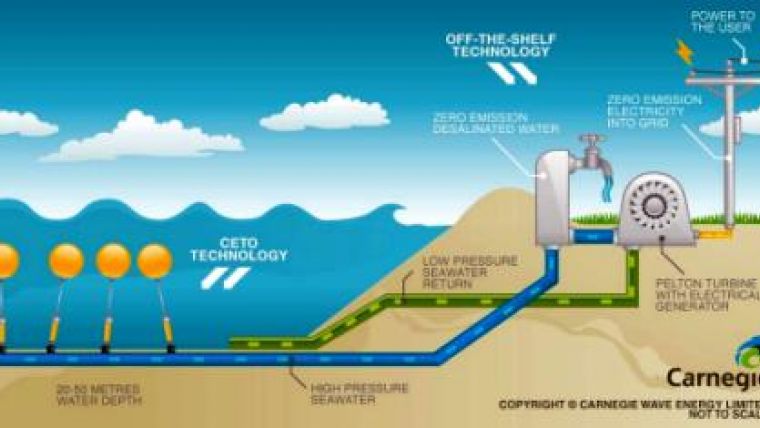Ireland Formally Funding Wave Energy Technology
Wave energy developer Carnegie Wave Energy has signed the formal funding agreement with the Irish Government's Sustainable Energy Association (SEAI) for a EUR150,000 project to evaluate potential CETO wave sites in Ireland and develop a site specific conceptual design. The project is 50% funded by the SEAI and 50% by Carnegie and forms the first phase of detailed design for a potential 5MW commercial demonstration project in Irish waters.
The project will be managed through Carnegie's Irish subsidiary, CETO Wave Energy Ireland Limited (). The project has now commenced with the appointment of Ireland-based engineering specialists RPS Consulting Engineers to undertake the study. RPS Consulting Engineers has a proven track record in engineering and environmental services in marine construction and the renewable sector, including a number of wave and tidal development projects in Europe and North America.
Carnegie's Dublin-based executive director of European Business Development, Kieran O'Brien said that this formal agreement with SEAI for project funding allows the company to begin detailed site assessment and develop the conceptual design of a 5MW commercial demonstration project in Ireland.
To support the development of ocean energy, the Irish Government is providing dedicated grant funding to support research, development and deployment of ocean energy and has established a feed-in tariff of EUR220 per megawatt hour for ocean energy. Ireland has also set a National target to produce 33% of its energy from renewable sources by 2020 including specific ocean energy targets of 500MW by 2020.
The CETO system distinguishes itself from other wave energy devices by operating out of sight and being anchored to the ocean floor. An array of submerged buoys is tethered to seabed pump units. The buoys move in harmony with the motion of the passing waves, driving the pumps which in turn pressurise water that is delivered ashore via a pipeline. High-pressure water is used to drive hydroelectric turbines, generating zero-emission electricity. The high-pressure water can also be used to supply a reverse osmosis desalination plant, replacing greenhouse gas emitting electrically driven pumps usually required for such plants.














